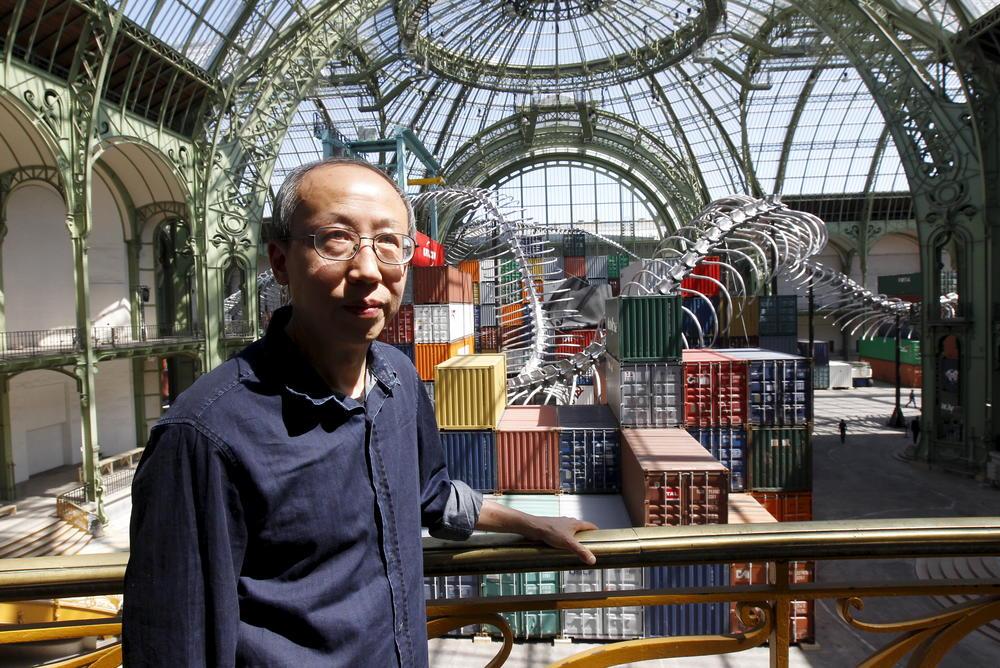Huang Yong Ping

Born in Xiamen, Huang studied fine art in Hangzhou. He made his first public appearances in 1986 as founder of the Xiamen Dada Movement. With his fellow South Chinese Dadaists, he created a series of events that confused everybody, friend and foe: during a 1986 show in the Fujian Art Museum Huang and his cohorts displayed scaffolding from a nearby construction site – instead of the artwork they had used to rent the museum space.
A month earlier, following an exhibition in Xiamen, he burned his works in front of the museum gates.
In 1989 he went to France to take part in a group exhibition in the Pompidou Centre in Paris. But during his four weeks abroad, the democracy movement ended in the Tiananmen Square crackdown. Huang decided to stay in France.
(Justus Krueger, An accidental artist, in the Sunday morning Post, March 23, 2008, p. 8)
Huang Yongping’s art should be understood first of all as a set of strategies of cultural resistance to the power of dominant discourses including the institutional system itself. As a major figure in the Chinese avant-garde of the 1980s, Huang Yongping has developed a radical system of thought and language that articulates critique and counter-propositions vis-à-vis the dominant power. His work introduced Western avant-garde art and thinking to China and emphasized the Dadaist tradition and deconstructivist theories. He combined these with traditional Chinese philosophy, which has been oppressed for many years under Maoist rule, in order to create a strategy to subvert the established and oppressive order of “official art” in China. (…)
The notion of change is central to Huang Yongping’s thinking and art. As a basic principle to the Chinese Weltanschauung, this idea is inscribed in the literature of Chinese philosophy and culture, most notably in the I Ching, the Book of Changes. It states that the world is always changing and is in a process of in multi-orientational movement and transformation. (…) Now the emphasis of “irrational” movement, change, chance and even chaos (as a more complete world view) can provide an effective strategy to deconstruct the redundant ideologies of Modernism and Eurocentrism. (Huang Yong Ping) introduced metaphysical and practical systems such as Chinese divination and geomancy so as to counterbalance the rationalist, scientific and technocentric systems of Western ideology and knowledge.
(Hou Hanru. A Necessary Reminder, in Uitgever, catalogue for Huang Yongping’s exhibition at De Appel – Centre of Contemporary Art, Amsterdam, 1997, pp 65-66)
His work Bat project inspired by the restitution in pieces of the American spy plane shot down by Chinese hunters in 2001, which he sees as a self-deconstruction of the power, was censored, by China and France, successively at the Shenzhen sculpture symposium in 2001 and at the Canton triennial in November 2002.
(Jean-Marc Decrop, Huang Yong Ping, in Jean-Marc Decrop & Christine Buci-Glucksmann, Modernités chinoises, Skira (ed.), Milan, 2003, p. 104, translated from French by Y. Shiraishi)
